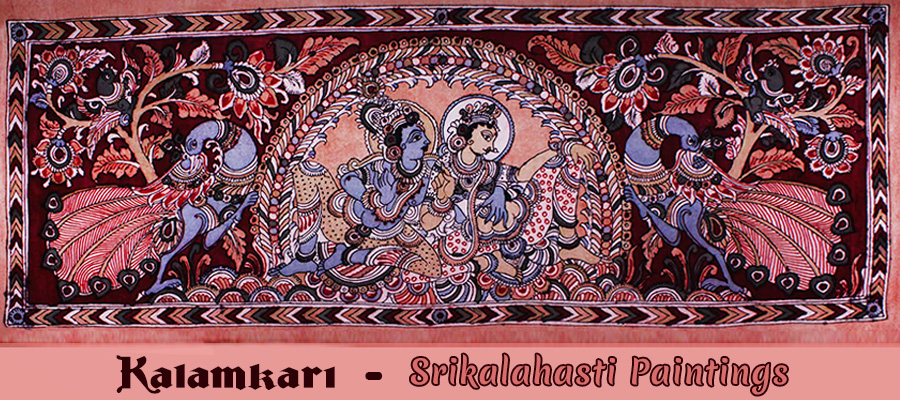
India in general and the state of Andhra Pradesh in particular need no special introduction for the sheer variety of art works and craftsmanship. In fact, every region has a tale of historical context, reflected in the unique art and craft forms. The mere mention of the term ‘Kalamkari’ evokes an innate feeling of creativity among art lovers and those who are fond of Kalamkari designs and print work
The Origin of Kalamkari
The name Kalamkari originates from Persian words - qalam (pen) and kari (craftmanship), and the word literally means drawing with a pen. In fact, Kalamkari is the art of painting cotton fabrics with a kalam i.e. pen, which is a sharp pointed pierced bamboo that regulates flow of colour on the fabric.
Forms of Kalamkari
Kalamkari art is unique in its use of colour as a medium to portray mythological characters in the form of paintings. The popularity of this exquisite form of paintings crossed the shores of the country during the 17th and 18th centuries. Andhra Pradesh is famous all over for this form of art. The major forms are Srikalahasthi in Chittoor district, and Machilipatnam Kalamkari, created in Krishna district.
Unique Element of Srikalahasthi Kalamkari
Srikalahasthi Kalamkari represents a style of Kalamkari work, related to the dyed hand-painting of fabrics, produced mainly in Srikalahasthi town of Chittoor district in Andhra Pradesh. It was registered for geographical indication from the state, under handicraft goods by the Geographical Indications of Goods (Registration and Protection) Act, 1999.The enhancing effulgence of colours and the characters that emerge on cotton fabric, help create a resplendent spread. The actual process of Srikalahasthi Kalamkari consists of seventeen steps involving block making followed by cloth treating, printing, and washing etc. This process approximately requires 8 to 10 craftsmen for creating one yardage of Kalamkari fabric. It can be rightly said that the craft of Kalamkari has wonderfully imbibed the rich and varied design elements reflecting the impressions of different cultures, and a beautiful synthesis of the Hindu and Muslim cultures. The defining factor of this craft likes in the warmth and richness of these colours which are produced as a result of the rapid absorption of the natural dyes, by means of a special mordant dyeing process. Originating in religious impulse, the Srikalahasthi style of Kalamkari is used widely to narrate stories from the epics through various means such as scrolls, temple hangings, as well as chariot banners. The major difference is that Srikalahasthi paintings are based completely on the brush while the Machilipatnam style makes use of block-printing technique.The popularity of this exquisite form of painting has earned international fame for the state of Andhra Pradesh. Lepakshi, The Andhra Pradesh Handicrafts Development Corporationhas been promoting the historical art by training skilled artisans and improving revenue generation through more exports. .
